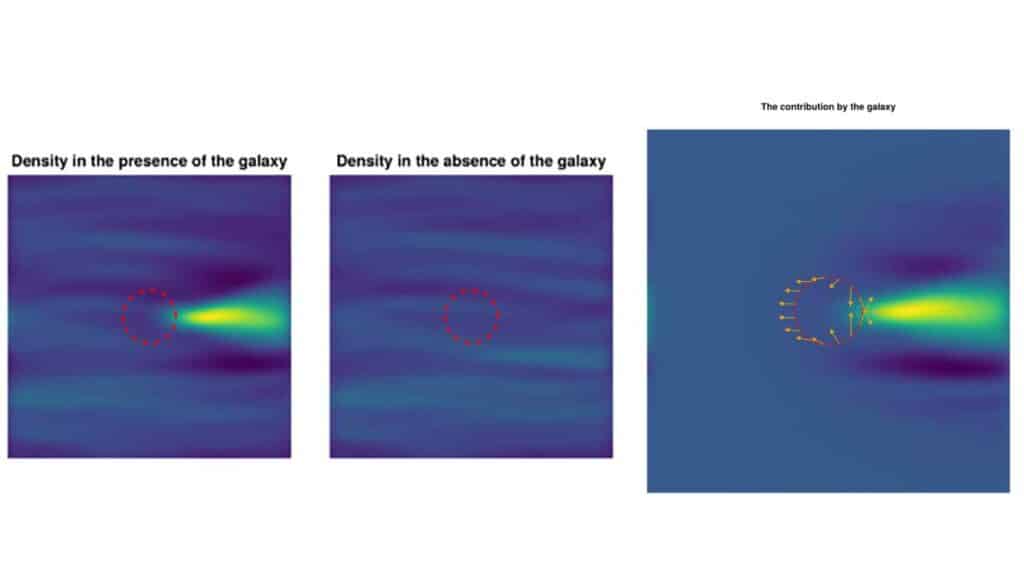Astronomers at the University of Tartu Observatory have developed a method to measure the speed of dark matter, potentially offering insights into the nature of the elusive substance that makes up 85 percent of the universe’s matter and has only been detected through its gravitational effects.
To measure the speed of dark matter, astronomers look for galaxies in the universe that are in motion relative to dark matter. Since everything in the universe is in motion and there is a significant amount of dark matter, identifying such galaxies is relatively easy.
Galaxies, being massive objects, attract all forms of matter, including dark matter and the visible matter we encounter daily. As dark matter passes by a galaxy, the galaxy exerts a gravitational pull on the dark matter particles, causing them to change their trajectory. However, because dark matter particles take time to alter their course, they pass the galaxy before being significantly affected.
As a result, dark matter particles do not enter the galaxy but move behind it. In this region behind the galaxy, the density of matter increases, leading to a phenomenon known as dynamical friction, which causes a slowdown in the galaxy’s motion.
The strength of dynamical friction depends on how quickly dark matter particles pass the galaxy and how much time the galaxy has to influence its trajectory. Slower-moving particles lead to a higher density of matter close to the galaxy, causing a more pronounced slowdown in the galaxy’s motion.
Assuming the galaxy causing dynamic friction is not small but significant, the resulting overdensity behind it creates varying levels of conflict at different points in the galaxy. This differential friction leads to a more lopsided shape for the galaxy. This phenomenon is akin to the changes in shape experienced on Earth due to tidal cycles caused by the moon’s gravitational influence.
The size of the dark matter particles becomes irrelevant to the method, as their orbits still curve behind the galaxy regardless of their eventual size. However, accurate results might be challenging if the dark matter particles were comparable in size to the galaxies, but current dark matter models exclude this possibility.

Identifying lopsided galaxies is relatively straightforward, as they constitute about 30 percent of all galaxies in outer space. The degree of lopsidedness and how far into the outermost parts of a galaxy one looks are factors influencing the ease of detection.
Additionally, a galaxy’s lopsided shape may not be solely attributed to dynamical friction; other factors, such as the aftermath of galaxy collisions or a continuous inflow of gas, can also contribute. In the case of collisions, the presence of another galaxy’s nucleus or a larger stellar halo inside the universe may be detected. Galactic lopsidedness caused by gas inflow would take several billion years to recover its shape.
Astronomers noted, “Thus, to measure the velocities of dark matter, we need a lopsided galaxy that is as isolated from other galaxies as possible. In this case, it is more certain that nothing has happened to it other than the passage of dark matter.”
“In this research, we have figured out how to precisely calculate the forces that affect galaxies in tidal cycles. The next stage is to find galaxies sufficiently lopsided in the universe to study the velocity of dark matter relative to the galaxies.”
Journal Reference:
- Rain Kipper, Peeter Tenjes et al. Back to the present: A general treatment for the tidal field from the wake of dynamical friction. Astronomy & Astrophysics. DOI: 10.48550/arXiv.2311.03790
